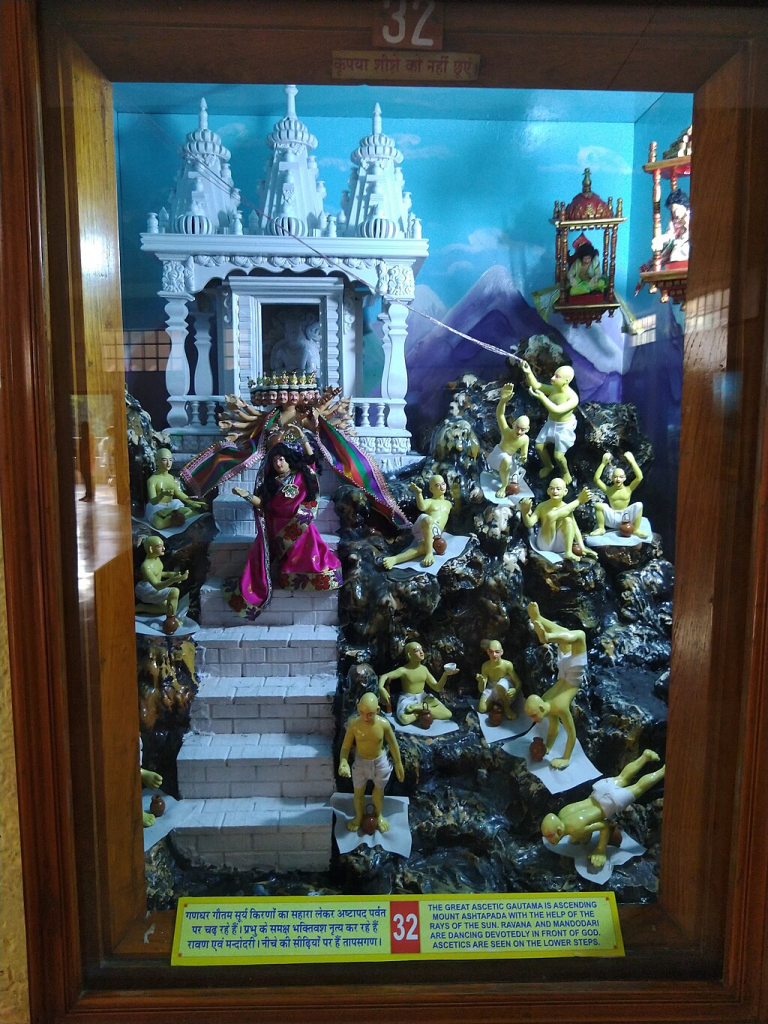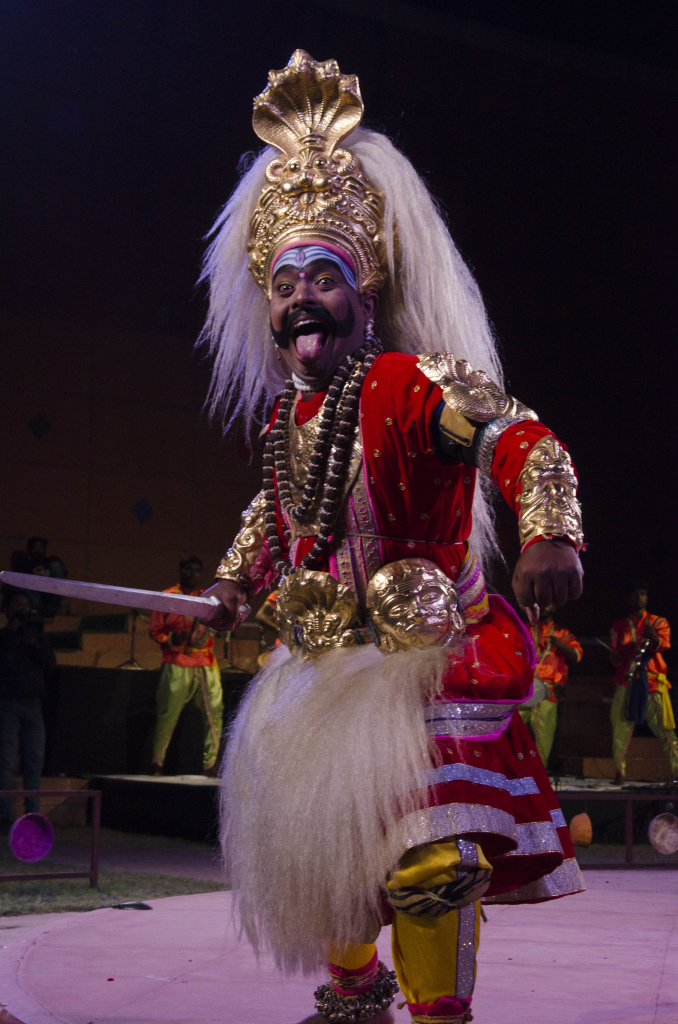Introduction
Ravana, a central figure in the Indian epic Ramayana, is traditionally known as the ten-headed demon king of Lanka who abducted Sita, leading to a war with Lord Rama. However, across the subcontinent, his character has been depicted in numerous ways, reflecting different cultural, religious, and regional perspectives. This essay explores 11 unique depictions of Ravana across South Asia.
1. Ravana in Valmiki’s Ramayana (India)
Ravana is the antagonist in Valmiki’s Ramayana, representing adharma (unjust). He is portrayed as the powerful, conceited king whose downfall is due to his pride and lust for Sita. The ten heads signify his vast wisdom but also the uncontrolled ambition and ego of Ravana. It is this conventional representation that often finds more room in the mainstream understanding of Hindu culture, particularly in North India where we burn Ravana every year during Dussehra to celebrate the power of good over evil.

2. Ravana in Jain Literature
In other literature, specifically Jain texts, Ravana is portrayed as a noble hero who adheres to his dharma. Jain texts such as the Padma Purana depict him as a Vidyadhara (guardian demigod) king. His behaviour is viewed as less wicked but the outcome of multiple events, thereby underlining his multi-faceted being which is a constant strain in South Asian religious traditions.

3. Ravana in Sri Lankan Culture
Many in Sri Lanka consider Ravana their ancient hero and a great king who ever ruled Lanka. Rama is perceived to have wronged, what many as Sri Lankans regard as their deposed sovereign, whose invasion by Rama was an attack of aggrandizement and injustice. Also, Ravana was not a legend as a warrior and administrator but also he was the erudite of all time and had knowledge in playing Vina hence his vina constitute famously known as Ravanahatha.

4. Ravana in Thai and Khmer Traditions
Ravana is reborn as Ravanapangu in Southeast Asia; and Thotsakan-Thailand and Krung Reap-Cambodia In either culture, Ravana appears in their traditional dance-dramas such as Thailand’s Khon and Cambodia’s Lakhon. They show him here as this muscular and grand figure, making sure to highlight his fighting prowess and kingly status. Instead of being a devil, he is often depicted as tragic hero who contained elements of hubris and excessive pride.

5. Ravana in Tamil Nadu
In Tamil Nadu, Ravana is remembered as a devoted follower of Lord Shiva, and as a great scholar and capable ruler. His vast learning in the Vedas is mentioned often in local mythology also how he did penance to shiva. In fact, Ravana is even included in some temple iconography of temples such as the one from Tamil Nadu which tell us how deep rooted his character is in Dravidian mythology He is also known for his mastery in music within southern classical traditions.

6. Ravana in Karnataka’s Yakshagana
Yakshagana, a folk theatre tradition of Karnataka will often portray Ravana in this complex way. And whereas the character of Ravana in Valmiki’s Ramayana is portrayed as a complete villain, here the players bring about his inner turmoil, which involves love for Sita and duty to his kingdom through Yakshagana performances. They all perform as heroes or heroes unsung after their bravery, and intelligence to the trap of destiny feeling as a tragic hero.

7. Ravana in Odisha’s Pattachitra
The Pattachitra art of Odisha depicts the exiled king in all his mythological grandeur. In art, he is a towering splendour of millenial sunshine imagery set against the backdrop of war and empire. As intricate paintings narrate, Ravana is not just a villain, he is much more than that — a symbol of power, a fierce warrior whose downfall serves as a grim reminder of the ephemeral existence of authority.

8. Ravana in Indian Classical Music and Dance
Ravana, the demon king of classical Indian traditions was considered an ardent devotee struggling against demonic influence. In the legend of Ramayana, Ravana was a highly skilled musician, and his prayers performed by singing were celebrated in Carnatic music. Some Bharatanatyam and Kathak dancers showcase Ravana as a man driven by passion but misinterpreted, for his music and intelligence.

9. Ravana in Contemporary Popular Culture
This is also the reason why Ravana has been revitalised in modern art, literature, and film in recent years. In Ravana’s secular God, popular cultures (from Bollywood to regional cinema) have similarly constructed the image of a tragic anti-hero as opposed to an evil figure: a tragic hero endowed with love, duty and fate. This extra- humanised depiction has grown particularly trendy in modern-day renditions of the Ramayana, which pull attention to the extent and complexity of Ravana.

Conclusion
Ravana as a figure, traverses the subcontinent and appears in a variety of forms- depending on region, art form, tradition etc. The many interpretations of Ravana, ranging from a demonarch villain to a god-king and tragic hero to the symbol of illimitable foibles in human beings, represent the diverse hues in South Asia. As such, these representations are a reflection of the fact that even the greatest villains in mythology have always been far from one-dimensional, and their narratives change to suit our time.
Feature Image: Saif Ali Khan playing Ravana in 2023 film| Courtesy: wikipedia





